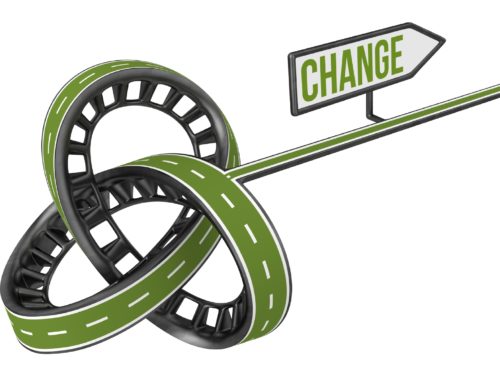I’ve offered observations about the year ahead each year since 2005. Lots of people do this, but unlike others, we grades ourselves on the past year.
Here is what we predicted last year at this time:
- Hold your breath – and your nose – until November. We said that the candidates would position this election as a “battle for the soul of America, and the accusations will get personal.”
Depending on your expectation, the candidates didn’t disappoint, OR they disappointed more than we could ever imagine. This was one of the nastiest elections on record. And, the winner was “More of the Same” with the President winning re-election and the Republicans hanging on to the house.
- The recovery expands … sort of. We predicted that the U.S. economy would grow 2.0% to 2.5% on average with state and local governments seeing their revenues flatten and perhaps grow a little as housing prices solidify and sales tax receipts pick up toward the end of the year.
The economy looks like it grew about 2.5% for the year, at the upper end of our estimates. Housing prices stabilized and started to grow across much of the country.
- It’s beginning to feel a little like job growth. We said unemployment would be in the 7.5% to 7.9% range on Election Day. We also predicted that there would continue to be pockets of hiring and low unemployment (like North Dakota). Finally, we said that the number of people not working or looking for a job would continue to be much higher than the unemployment rate shows.
Yes, yes, and yes. The unemployment rate was 7.9% in October and 7.7% in November 2012. But, the big story is still the number of people who have given up looking for work.
- Education matters more than ever. Here is what we said in 2012: “Your level of education is becoming the single most important factor in landing a job.”
This article by Kayla Webely in Time magazine confirms what we said last January. Unemployment for those with a Bachelors degree is 6.8%. It is 24% for those with only a high school diploma.
- The Millennials are really coming this time. I had been waiting to say this for several years: “The Millennial generation born after 1983 is finally ready to take their place in today’s organizations.”
I don’t buy the claim that 10,000 Baby Boomers are retiring every day as Speaker John Boehner and others have touted. But, I do know that it takes longer for those over the age of 55 to get a new job when they are laid off.
We are crossing a threshold where the workforce will be dominated by a new “Super Generation” of workers, who like the Baby Boomers, will re-define the work experience.
So it looks like we hit 5 for 5 in 2012. Let’s see what is ahead for 2013.
- This is what 1940 must have felt like.
There are striking parallels between 1940 and today. At that time:
- We were coming out of the Great Depression and unemployment was still high.
- President Franklin Roosevelt had invested heavily in the New Deal as a stimulus to spur jobs and spending, but the results had been questionable. Opposition to the New Deal came from the wealthy who didn’t want their taxes raised; the Republicans who felt that the Federal government shouldn’t be involved in the economy; business who didn’t want the government increasing their taxes and imposing worker rights; and the liberal left who felt that the New Deal didn’t go far enough.
- Business, particularly big business, had a bad reputation based on their disregard for workers at the start of the Depression.
- Budget balancing attempts in 1937 had returned the country to a Depression despite improvements that had been seen because of government stimulus.
Does this sound familiar? The United States saw unemployment start to turn around with World War II. During that time, debt continued to increase, but the economy started to improve.
The United States is war weary as we enter 2013, but we are looking for that unifying national focus on something important.to break through the malaise and energize the country toward a common goal.
That goal could be global competitiveness and job growth – including tax reform, entitlement reform, immigration reform, and education reform. My dream is that this could happen in 2013. My fear is that we have elected leaders who are more interested in philosophical differences than pragmatic solutions.
If my dream comes true, get ready to be excited about American leadership and growth. If my fear comes true, it will be another year of missed opportunities.
- Pro-employee/labor policy direction – but probably not at the State level.
The President can’t get sweeping labor and employment legislation through the Republican controlled U.S. House of Representatives. Don’t expect a lot of new legislation. Do expect pro-employee and pro-labor executive orders that will infuriate business owners and delight the labor unions and working people who feel that they have been abused and forgotten in the economic recession.
The one exception to this will be the increasing trend of State governments moving toward more business-friendly policies. That will mean a few more battles like the ones that have played out in Wisconsin and Michigan. States are the new battleground for economic growth, and business-friendly policies will be touted as one of the important tools.
- The nimble and relevant thrive.
Faster, better, cheaper, and friendlier is the battle cry of businesses that must compete in a hyper-competitive global marketplace. I expect the emphasis on continuous improvement, staking out a distinguishable point of difference, and growing the top line to continue as business themes in 2013.
The result for workers is that they will continue to be asked to run farther and faster than they have run before at a time when they fell that they are running as far and fast as they can.
Watch out for burnout and the defection of key staff. The leaders who can keep their team energized and engaged in the face of this reality will be valued.
- Job growth: a story with three possible endings
At the time of this writing, the U.S. Senate and White House have agreed on a short-term plan to avoid the “fiscal cliff.” The U.S. House is still considering it, and the best result is that the government kicks the can down the road for a few months as it continues to fight about tax and spending policy.
I am guessing that the House will reluctantly pass the Senate bill but not without lots of drama.
The debt ceiling and spending cuts will come up in the spring, and the fighting will resume then. And, don’t forget the on-going debt problems in Europe.
If the Federal government messes this up, we will be thrown back into a recession. It won’t be as bad as 2008 – 2009, but it will be a recession. In that case, I see unemployment going back above 8% and probably finishing the year somewhere between 7.5 and 7.9 percent (basically where we are today).
My most probable scenario is that the problem is solved, but not much happens to spur long-term confidence. In that case, expect slow job growth to continue, and we’ll end 2013 in the 7.0 to 7.5 percent range.
The best case scenario is that the U.S. elected officials in Washington miraculously get it right. In which case, we could be seeing dramatic job growth starting in the second half of the year. I don’t expect that unemployment will breach the 7% number, but it could if all the stars align domestically and internationally.
Remember, there are three things that will affect your business success in 2013:
- What the economy does.
- What the government does – including those rogue regimes that might do something that changes everything
- What you do.
The one that is most important is the only one you can control.
Happy 2013!





